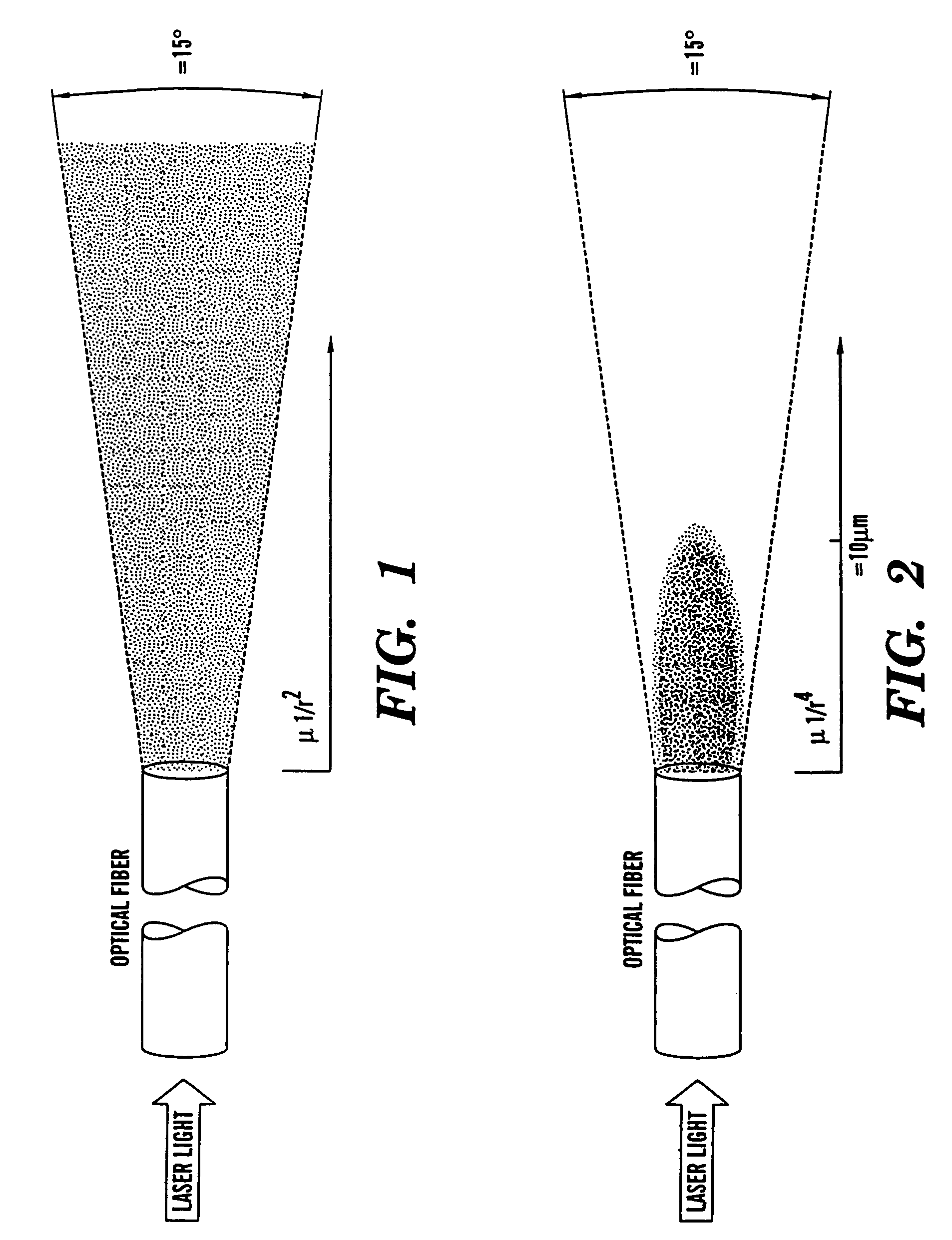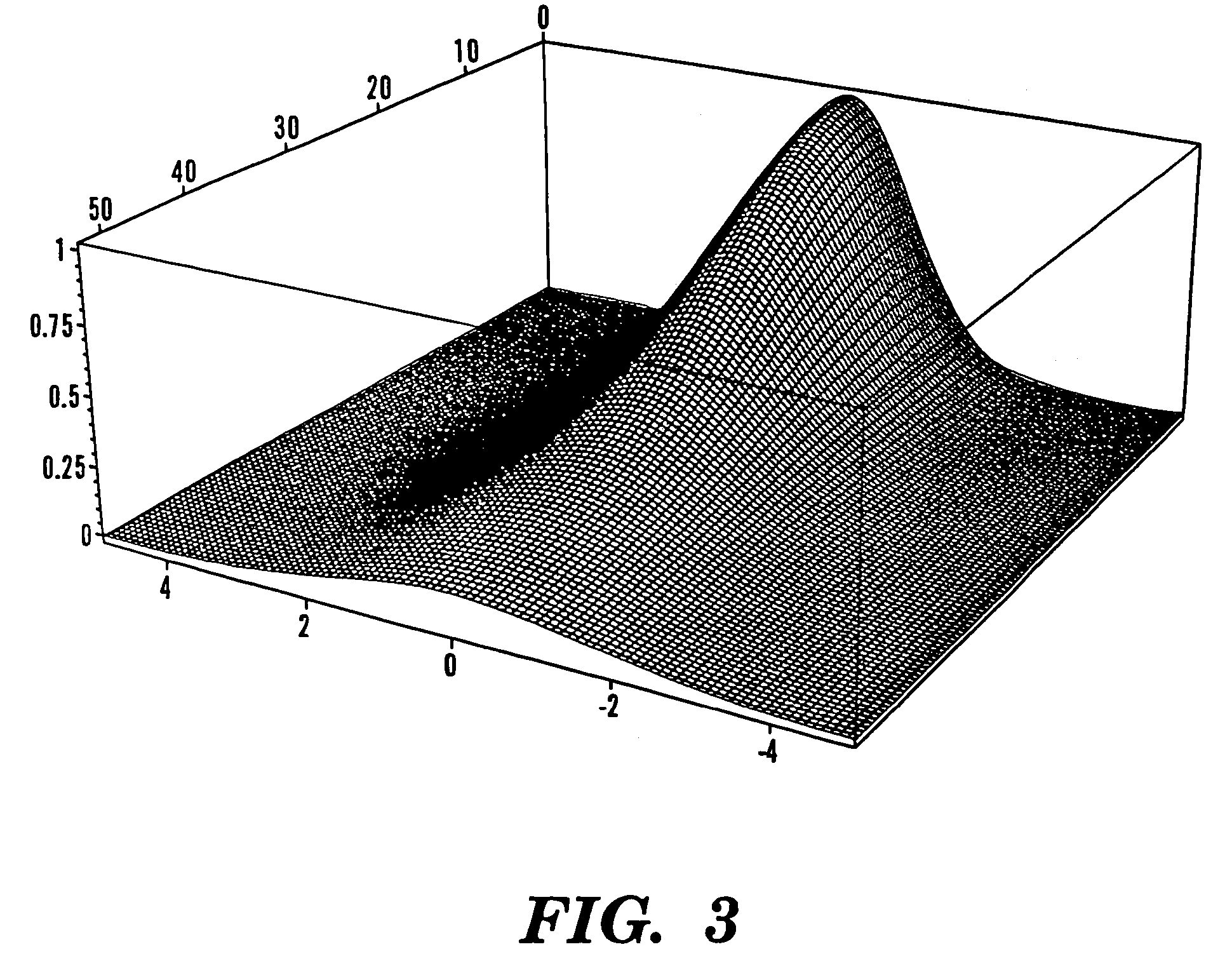Optical fiber delivery and collection method for biological applications such as multiphoton microscopy, spectroscopy, and endoscopy
a technology of optical fiber and biological applications, applied in applications, instruments, diagnostic recording/measuring, etc., can solve the problems of insufficient volume observed, insufficient angular spreading, and insufficient spatial resolution, etc., to achieve sufficient spatial resolution, convenient resolution, and use the effect of spatial resolution
- Summary
- Abstract
- Description
- Claims
- Application Information
AI Technical Summary
Benefits of technology
Problems solved by technology
Method used
Image
Examples
example 1
Delivery of Nanojoule Femtosecond Pulses Through Large-Core Microstructured Fibers
[0068]This example reports on the delivery of femtosecond pulses through large-core MFs. 100-fs input pulses, which were negatively prechirped with a grating precompensator, were coupled into MFs with core diameters of 15 and 25 μM. The excitation of the fundamental mode was readily achieved, and only weak coupling to higher-order modes was observed even when the fibers were tightly bent. Under similar conditions, a standard SMF delivers pulses more than 10 times longer than those delivered by MFs.
[0069]The experiments involved the use of a standard SMF and two types of MF (commercially available from Crystal-Fiber A / S) (see FIG. 5). The parameters of the first MF (MF1) were core diameter, 15 μm; pitch, 11 μm; and hole diameter, 6.6 μm. The second MF (MF2) had a core diameter of 25 μm and an air-filling fraction of nearly unity. An SMF fiber designed for single-mode operation at 800 nm was also utilize...
PUM
 Login to View More
Login to View More Abstract
Description
Claims
Application Information
 Login to View More
Login to View More - R&D
- Intellectual Property
- Life Sciences
- Materials
- Tech Scout
- Unparalleled Data Quality
- Higher Quality Content
- 60% Fewer Hallucinations
Browse by: Latest US Patents, China's latest patents, Technical Efficacy Thesaurus, Application Domain, Technology Topic, Popular Technical Reports.
© 2025 PatSnap. All rights reserved.Legal|Privacy policy|Modern Slavery Act Transparency Statement|Sitemap|About US| Contact US: help@patsnap.com



